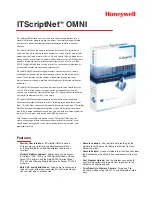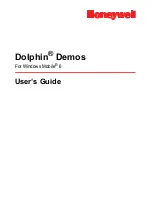
Using i!-Schedule
9
i!-Schedule
the fractions of a second offered by SNTP and therefore has the same accuracy as the Time protocol
but SNTP also provides information about the integrity of the data supplied. This makes the SNTP
protocol more accurate than the Time protocol. RFC2030, which defines the SNTP protocol, has
also made a provision for Dates and Time after Feb 7, 2036. SNTP message can represent a Date
and Time accurately until some time in the year 2104. Most of the NIST servers also provide Date
and Time information in SNTP format.
The difference between SNTP (123/udp), SNTP Broadcast (123/udp) is simply one of connection.
It is possible to configure an SNTP server to broadcast the time in SNTP format to an entire
network or node of a network. The Time Manager in i!-Schedule can be configured to actively
retrieve the time in SNTP format from an SNTP server (protocol number 3) or simply listen for
SNTP broadcasts on the network (protocol number 4). Although SNTP broadcasting may sound
like an ideal solution for Date and Time information, the Network Administrator should make this
decision.
So why did we implement so many time protocols? Which timeserver protocol should you use?
This depends on your Network configuration and your Network administrator. It is probable that
your network already provides some form of Date and Time information, and that information is
probably obtained from a highly accurate source. Most installations of i!-Schedule should make use
of the time server protocols already available on your network. To find out if such services are
available on your network, contact you Network Administrator.
You might also like to look at commercially available software for Time synchronization. The Time
Manager in i!-Schedule has been tested with Tardis 2000 (
http://www.kaska.demon.co.uk
) which
can provide all versions of the Time protocols above, including SNTP broadcasting. If you are
interested in synchronizing many computers as well as i!-Schedule, Tardis 2000 provides a great
solution.
For simple Date Time synchronization, select DayTime (value=1) and leave the server field blank.
A default NIST server will be selected. Most NIST servers supply all three formats of Date and
Time protocols but the DayTime is the most common protocol provided by NIST servers. The Time
Manager portion of i!-Schedule will synchronize the NetLinx masters time with the servers at
NIST. It would be a good idea to setup the DNS server entries on the NetLinx master but not
required. If the name lookup fails for a given server name, the IP address is tried directly. It may
take a couple of attempts, but a server will be located and time synchronization will occur.












































